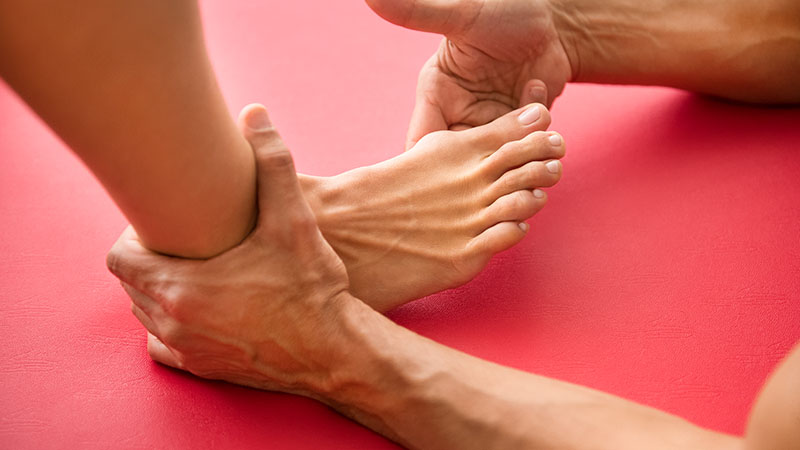Commonly known as bunion, hallux valgus is a painful deformity presenting deviation of the big toe towards the second toe and the outer side of the foot. Hallux valgus causes swelling and soreness at the base joint of the big toe and the first metatarsal bone (the bone just behind the big toe) and is particularly related with wearing pointed and high-heeled shoes. The protrusion often caused by footwear preferences causes pain, deformity of the bone and redness of the skin making hallux valgus to create a negative impact on daily life routines.
Who Does Hallux Valgus Affect? Why?
Anybody can suffer from hallux valgus although some people with genetic predisposition to bunions are more likely to have it. However, regardless of genetic factors found in family medical history, bunions can commonly develop due to use of tight, pointed and high-heeled shoes. Therefore, the risk group for hallux valgus is often narrowed down to women between the ages of 30 and 40. Still, this deformity can be observed in women who say that they have never worn pointed and high-heeled shoes in their lives. In this case, the cause of bunions can be related with the structure of the foot and, again, genetic factors.
Feet with high arches (pes cavus; abnormal height underneath the foot) or flatfeet (pes planus; flatness underneath the foot) may also bring about bunions. These are the fundamental risk factors for hallux valgus. Nevertheless, younger people, older people, and men, alike, can also experience this deformity depending on their footwear choices. Below is a list of risk factors that cause the protrusion of the big toe joint:
- Use of pointed and high-heeled shoes
- Genetic predisposition
- Supinated foot
- Flatfoot
Symptoms of Hallux Valgus
- Protrusion in the big toe
- Swelling
- Redness
- Pain
Treatment of Hallux Valgus
In order to stop or slow down the progression of hallux valgus, physicians prefer non-surgical treatment methods. One common suggestion is to use bunion pads that go between the toes and night splints. However, benefit of such supportive materials is still controversial as they do not always address complaints. Besides, bunion pads are difficult to use and uncomfortable to walk with.
Hallux Valgus Surgery
Our mission is to treat patients with least pain and damage possible. Therefore, non-surgical methods are always our primary option. However, in the interest of complete disclosure, it should be made clear that the only definitive treatment of hallux valgus is surgery as non-surgical methods have no capital effect on this deformity.
Hallux valgus operations can be carried out through various methods in accordance with the stage and structure of the deformity, the patient’s foot structure, and daily routine. The final decision is made after a thorough assessment of x-rays images. The common objective of hallux valgus surgery is to correct the protrusion. The post-operative process of this intervention varies according to the treatment methodology applied. It may be necessary to stay in the hospital for an average of two days. 24 hours after the operation, patients can walk on their heel. After ten days, they can walk normally in special hallux valgus shoes. Ideally patients are asked to wait for a month to slip into normal shoes.
Hallux valgus surgery is a difficult operation that requires experience and precision and it should be carried out by people who are especially experienced in foot surgery.
 EN
EN TR
TR AR
AR RU
RU